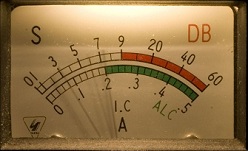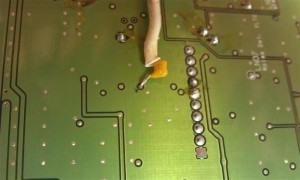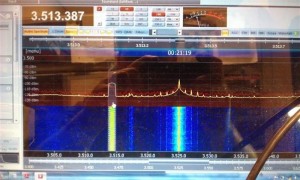Several years ago, I modified a Softrock kit to operate at 455 kHz. The main purpose behind this build was to add the ability to connect it to a receiver’s IF output (if it operated at 455 kHz, which is a common IF output), and gain SDR operation – spectrum display, various modes, etc. This basically used the host receiver as an RF downconverter.
Around the same time, the local county was starting to switch to a P25 system, which was going to render my Uniden BC780XLT to be of limited use. Since I had this new SDR adapter, I reasoned that tapping the IF on the 780 would be a good use for the radio.
Through the use of an EMSCAN (http://www.emscan.com/), I located the IF locations within the receiver. Using the schematic and a spectrum analyzer and oscilloscope probe, I located several vias and components where I could tap the IF.
Bottom of the board (top of the radio) showing my capacitive tap (100pF at 455 kHz is fairly low resistance)
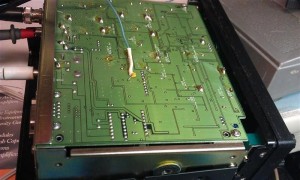
closeup of the tap
top of the board (bottom of radio) – closeup showing the via (hole through the board) I tapped
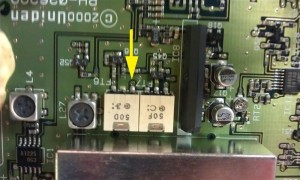
here’s my IF interface, a modified softrock40 – available occasionally form Tony Parks, KB9YIG
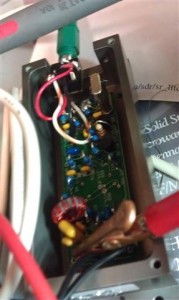
Signal on the computer using SDR software (freq is wrong, but that’s due to the fact that I’m only using the software to process the signal – not control the radio Note, the bright peak in the center of the display is the LO – basically a DC hump in the spectrum – kindof stuck with it, but i can live with it. This peak is actually at 460 kHz – this is 1/4 the LO frequency of my softrock (1.84 MHz) – the distance between that peak and the signal i was injecting is roughly 10 kHz (450 kHz – 460 kHz).
Note that because I do not have a 10.7 MHz SDR, I have not bothered to tap the higher frequency Ifs. I believe that the 566 kHz IF has sufficient bandwidth for most things that one would use an IF tap for on this particular radio.
